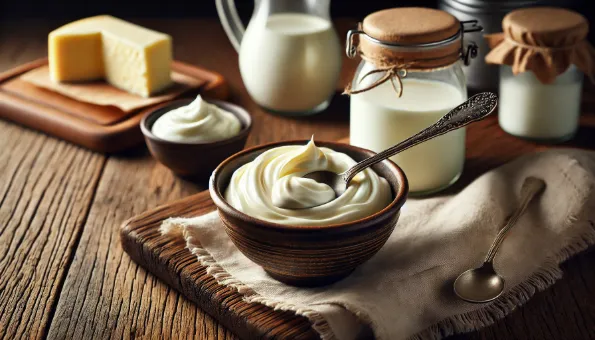Clotted Cream: The Lusciously Thick Devon Classic
High‑fat, velvety clotted cream adds indulgent richness, calcium and vitamin A to scones and desserts—with a few health caveats.

What Is Clotted Cream?
Originating in Devon and Cornwall, clotted cream is made by gently baking full‑fat cow’s milk until the cream rises and *clots*, creating a 55–64 % milk‑fat spread that’s thicker than whipped cream but silkier than butter.
Nutrition Snapshot (per 100 g)
**Calories:** ~586 kcal
**Fat:** 63 g (of which saturated 40 g)
**Carbohydrates:** 2 g
**Protein:** 2 g
Key micronutrients: vitamin A (~450 µg RAE), vitamin D, calcium (~55 mg per tbsp), conjugated linoleic acid (CLA).
Why It Can Be Beneficial
- **Energy‑dense** for athletes & keto eaters
- Supplies fat‑soluble vitamins A, D, E & K
- Contains CLA & butyrate that may support gut integrity
- Adds extra calcium if you don’t drink much milk.
Drawbacks & Precautions
- **High saturated fat & cholesterol**—limit if LDL is elevated
- Contains lactose; unsuitable for dairy‑free diets
- Very calorie‑dense—stick to small portions.
Culinary Uses
- Classic topping for scones with jam
- Spoon over fresh berries or pies
- Swirl into mashed potatoes or cream sauces
- Fold into ice‑cream bases for ultra‑smooth texture.
Storage & Food Safety
Store unopened tubs ≤4 °C; once opened keep airtight and use within **5–7 days**.
Freeze up to **3 months**—thaw in the fridge; texture may become slightly grainy.
Lighter Alternatives
For similar tang with less fat try crème fraîche (30 % fat), Greek yogurt (10 % fat) or whipped coconut cream (dairy‑free).
- 1. Clotted Cream
Use in moderation due to high fat.

